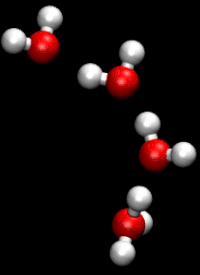Grotthus mechanism

Okay kiddo, imagine you and your friends are playing a game of passing a ball around in a circle. When you catch the ball, you throw it to the next person until everyone has had a turn. This is kind of like how energy moves around in a battery or in electrolysis.
The Grotthuss mechanism, named after a scientist called Theodor Grotthuss, is all about how energy moves through water molecules in an electrolyte solution (which is used to conduct electricity, like in a battery). In this case, let's imagine water molecules are the ball and the players are the atoms in the water molecule.
When a battery is connected to a circuit, a chemical reaction happens inside the battery called electrolysis that creates positive and negative charges. These charges need to move through the electrolyte solution (which is usually water and some chemicals) to create electricity.
So, here's how the energy moves through the water molecules using the Grotthuss mechanism. Imagine each of the players (atoms) in the water molecule is holding hands with the other players, like a chain. When a positive charge (like a proton) is created in the electrolyte solution, it can jump from one water molecule to the next using the chain of hands. As the positive charge moves from one water molecule to the next, it drags along a negative charge behind it.
The chain of water molecules keeps passing the positive and negative charges from one to the next, kind of like passing the ball around in a circle, until the charges reach the end of the chain and can be used to make electricity.
In summary, the Grotthuss mechanism is all about how energy moves through water molecules in an electrolyte solution to create electricity, using a chain reaction of positive and negative charges passing from one molecule to the next like a game of passing the ball around in a circle.
The Grotthuss mechanism, named after a scientist called Theodor Grotthuss, is all about how energy moves through water molecules in an electrolyte solution (which is used to conduct electricity, like in a battery). In this case, let's imagine water molecules are the ball and the players are the atoms in the water molecule.
When a battery is connected to a circuit, a chemical reaction happens inside the battery called electrolysis that creates positive and negative charges. These charges need to move through the electrolyte solution (which is usually water and some chemicals) to create electricity.
So, here's how the energy moves through the water molecules using the Grotthuss mechanism. Imagine each of the players (atoms) in the water molecule is holding hands with the other players, like a chain. When a positive charge (like a proton) is created in the electrolyte solution, it can jump from one water molecule to the next using the chain of hands. As the positive charge moves from one water molecule to the next, it drags along a negative charge behind it.
The chain of water molecules keeps passing the positive and negative charges from one to the next, kind of like passing the ball around in a circle, until the charges reach the end of the chain and can be used to make electricity.
In summary, the Grotthuss mechanism is all about how energy moves through water molecules in an electrolyte solution to create electricity, using a chain reaction of positive and negative charges passing from one molecule to the next like a game of passing the ball around in a circle.
